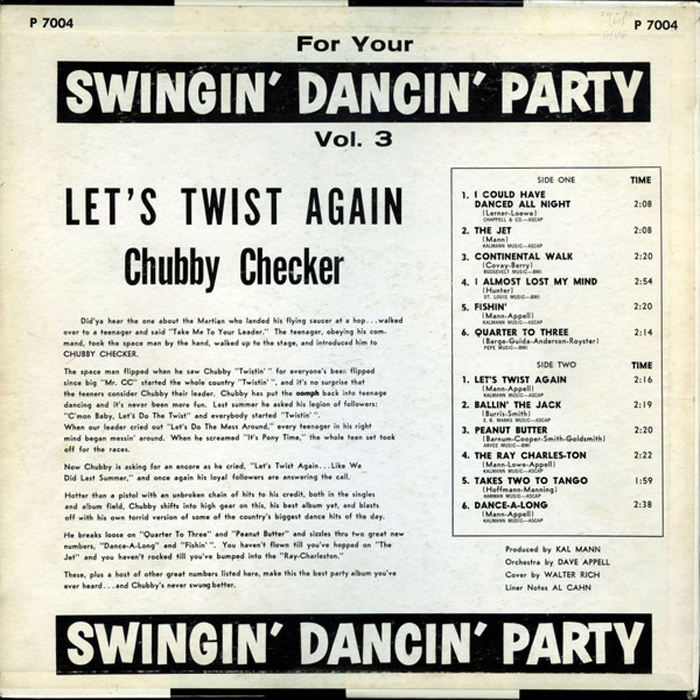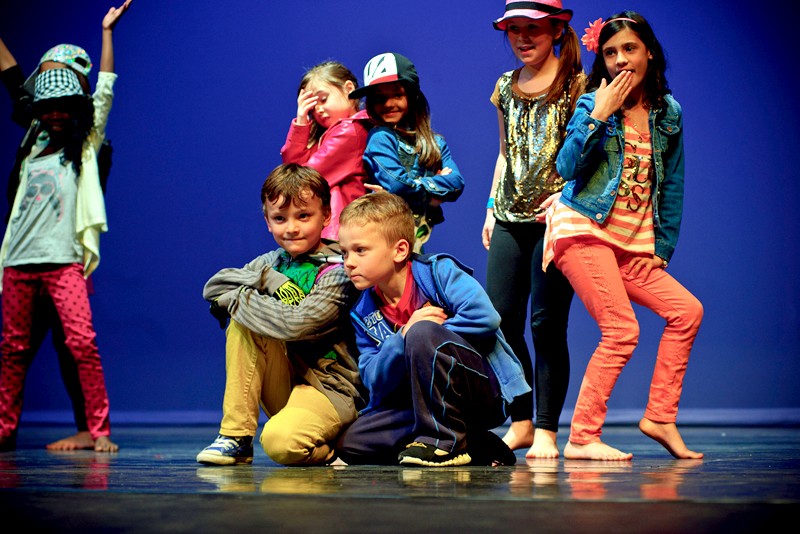How to judge a solo dance competition
A Judge's Guide To A Solo -
We are smack dab in the middle of competition season and hopefully things are going well. Perhaps you’ve performed a solo this year and found out that it can be a ‘hurry up and wait’ kind of performance. You find yourself warming up over and over and waiting until your turn. The longest part of the weekend is by far the solo competition. It is also the when the judges see dancers at their most nervous. To do my best to calm your dancers’ nerves, I wanted to write today’s blog on what we, the judges, look for in solos. Brace yourself, it might not be what you think…
Entertain Me!
Like I mentioned in the introduction, solos take the most time of any category at competitions. You can find yourself against ten or more dancers of the same age and category. How are you supposed to stand out among the sea of soloists? Well, the answer is to simply entertain the judges to death! The judges want a dancer who keeps them locked in from beginning to end. Pull them in with your performance. When I was growing up, my dance teacher always told us, “Make them put their pencils down.” In other words, you should be so entertaining, that you captivate your audience’s attention from beginning to end. This is an important skill and doesn’t come over night but, it’s something that will always get you noticed. Continue to think of ways you can draw in your audience with your facial expressions, style and originality. This can be applied to any style. Even a stark, serious Contemporary solo can entertain. A dancer with laser focus commands the stage and can sometimes leave the judges thinking about that performer for days to come.
Confidence
It’s easier said than done to tell you to be confident on stage. I remember the days of my solos and feeling that super-charged nervous energy. The only way I got through it was to believe in myself and of course, put in the hard work and rehearse. The dancer must be prepared. Soloists should perform in front of other dancers, parents and of course, all teachers. The more prepared you are, the more confident you will dance. Keep your eyes up and projected out to the audience. Be completely committed to your performance. Try not to look off to the wings or down to the floor. Tell the story with your movement. Be so focused in your solo that if the fire alarm went off, you wouldn’t hear it. I also think it’s important to be 100% you. Be your most authentic self on stage (Unless you are playing a character but, even then, you want to make your own unique character choices and not copy anyone.) All the judges need to see is that you’re trying not to be anyone else. Think of it like this- your performance needs to be so authentically you that no one else could be on stage, let alone perform with you on stage hence, why it’s a solo.
The more prepared you are, the more confident you will dance. Keep your eyes up and projected out to the audience. Be completely committed to your performance. Try not to look off to the wings or down to the floor. Tell the story with your movement. Be so focused in your solo that if the fire alarm went off, you wouldn’t hear it. I also think it’s important to be 100% you. Be your most authentic self on stage (Unless you are playing a character but, even then, you want to make your own unique character choices and not copy anyone.) All the judges need to see is that you’re trying not to be anyone else. Think of it like this- your performance needs to be so authentically you that no one else could be on stage, let alone perform with you on stage hence, why it’s a solo.
Details
When we rehearse routines like trios, small groups, large groups, lines or even productions, we are practicing for synchronicity. We make sure each body is moving at the exact same time, doing the exact same thing. In a sense, rehearsing groups is about togetherness. When we rehearse solos, it’s an entirely different goal. By rehearsing a solo, the teacher or choreographer is looking for clarity and details. Solos should be performed with clear and concise choreography. This doesn’t just pertain to turns, leaps and kicks. It means that those little in-between steps, the details, should be clear. Some examples might be to make sure you step in first position for a chainé turn or show that your arms come through first position before a grand jeté. It’s up to the soloist to then take these corrections and run with it. The soloist should have the discipline to apply and perform the details so that they are executed with each performance. Putting in the work to make steps clear and concise will make you look polished and prepared for the stage.
In a sense, rehearsing groups is about togetherness. When we rehearse solos, it’s an entirely different goal. By rehearsing a solo, the teacher or choreographer is looking for clarity and details. Solos should be performed with clear and concise choreography. This doesn’t just pertain to turns, leaps and kicks. It means that those little in-between steps, the details, should be clear. Some examples might be to make sure you step in first position for a chainé turn or show that your arms come through first position before a grand jeté. It’s up to the soloist to then take these corrections and run with it. The soloist should have the discipline to apply and perform the details so that they are executed with each performance. Putting in the work to make steps clear and concise will make you look polished and prepared for the stage.
It’s not always about how many turns you can do or how high your legs go. It is about the quality of the dancer that always wins top score. In any competition, I can guarantee that the top dancer possessed qualities that entertained, pulled in and impressed the judges. Dancers must captivate with confidence and details. Your teachers are always helpful but, it takes the work of the soloist to put in the time and effort to make these things happen. You can do it but, you must put in the work!
Dancers must captivate with confidence and details. Your teachers are always helpful but, it takes the work of the soloist to put in the time and effort to make these things happen. You can do it but, you must put in the work!
Marissa Anderson is a performer, choreographer, teacher and adjudicator for StarQuest with over 20 years of experience in the dance industry. She also hosts, writes and produces her own podcast on iTunes called “Beyond the Mirror: A Dancer’s Podcast”.
1836
SHARES
What Dance Competition Judges Want
Competition season is upon us. Costumes are ordered (and most likely rhinestoned), dances are finished (and hopefully clean), and hotels are booked. To become even more prepared for this year’s competitions, I’ve compiled a list of what dance competition judges want when they are sitting for long hours, which can be a bit exhaustive.
I judge for two competitions, and I have several phrases that I find myself repeating multiple times per dance, all day long. I’ve also asked a few of my adjudicator friends for their input, because judging a dance competition is, after all, subjective. Every judge looks for different nuances and technical elements. Here is a list of the most commonly stated judging phrases and helpful tips.
Dancers performing at New York City Dance Alliance. Photo courtesy of NYCDA.
#1. Point your feet.
I know – it’s so obvious, but so many dancers surprisingly don’t fully point! There are many different ways to say the same exact thing. Extend your energy through your feet; make sure you’re pointing your toes, not just your ankles; roll through your feet, and so on. They’re all saying the same basic principal that every dancer needs to master…pointing your feet. Point your feet during jumps by peeling your feet off the floor, point your feet during floor work and transitions, and (my most common correction) point your feet during à la seconde (or second) turns.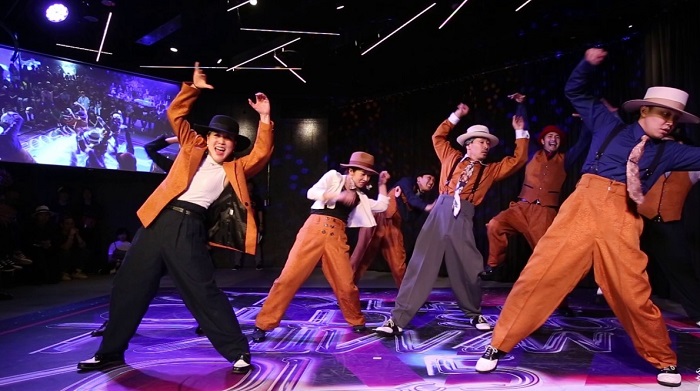 It really is the most obvious and first way that a competition judge can tell right off the bat if you’re going to get a high or low technique score. I know it seems so basic, but seriously…point your feet!
It really is the most obvious and first way that a competition judge can tell right off the bat if you’re going to get a high or low technique score. I know it seems so basic, but seriously…point your feet!
#2. Dead face equals sleepy/annoyed judge.
There aren’t many things worse in the whole world of the performing arts than “dead face”. If you listen to your critiques from a competition’s judges, and they say things like, “What are you dancing about?”, “What is your story?”, “Smile!”, or “Give me more emotionally!”, then you probably need to watch your face in the mirror next time you run your dance or solo, and make sure you’re giving some kind of face.
Some tips: A hip hop dance can still include facials — a smirk, something. When in doubt, smile; it’s something. We can see you in the back; you still have to emote. And fake facials that are over-the-top and contrived don’t normally score well with me, but it’s better than nothing.
#3. Cleanliness really is next to Godliness.
Cleanliness really is next to Godliness.
Teachers! Clean your dances. Clean your dances. And then clean your dances again. Solos, duets, [especially] group dances — clean them all. If you are not the best at cleaning dances, then hire someone to come in and clean your dances. As a judge, you want the dancers on stage to succeed. It is so hard to watch a dancer not perform to the best of their ability because they are insecure with the spacing or choreography. Help them by pushing them to run their dances again and again.
Dancers performing at Onstage New York. Photo courtesy of Onstage.
#4. Choose a different song than the #1 hit.
We know…most of us judges are choreographers ourselves. We want to use the latest Adele song, too. But since we know we’re going to judge about 50 Sam Smith’s per day, we tend to stay away from the popular song of the moment when choreographing on our students. If you do feel compelled to use a particular song, try at least to find an acoustic version, or a covered version of the song. This helps judges with their sanity, and you won’t be penalized immediately when we hear, “Hello…it’s me…”.
This helps judges with their sanity, and you won’t be penalized immediately when we hear, “Hello…it’s me…”.
#5. Present yourself professionally.
There is absolutely no excuse for untidy hair and ripped tights. Always have a back-up plan. Judges do not penalize for a cast (but put some nude ace bandages around it if it’s hot pink), or for costume malfunctions that are out of the dancer’s control. But “there is no excuse for sloppy presentation,” says competition judge Lesley Anne Mealor. “Make sure you’ve rehearsed in costume before the day of the performance, and make sure nothing is out of place.”
#6. Be gracious, sincere and positive.
One of the most horrific things I’ve ever seen at a competition is when a dancer receives an award (probably not exactly the award they wanted or expected), and he or she is uncouth and ungrateful for the award, or rolls his/her eyes. Or when another studio’s dancers scored higher, and you are unkind and unsupportive toward the other studio. Yes, dance competitions are about awards and placements, but why not be supportive of your peers, when one day, they might be your co-worker or college roommate? The dance world is a small one.
Yes, dance competitions are about awards and placements, but why not be supportive of your peers, when one day, they might be your co-worker or college roommate? The dance world is a small one.
CK DanceWorks dancers in ‘CK Airways’, choreographed by Christina Wiginton and Brian Mason. Photo by Dance Studio Life.
#7. Performance vs. Technique.
The age-old question: which is more important, performance or technique? For a lot of judges, including myself, they really are equal. Dance competition judge Jordan Keyon Smith says, “Remember that showmanship and performance quality are just as important as great technique.” I love a beautifully executed technical dance. But if that dancer’s performance quality does not match his or her technique, I take off points for overall performance.
An example of this I see quite often is in tap soloists. Often, a tap dancer’s feet are insane and would score the highest out of all solos but their performance quality is lacking because they might think, “It’s tap, not lyrical.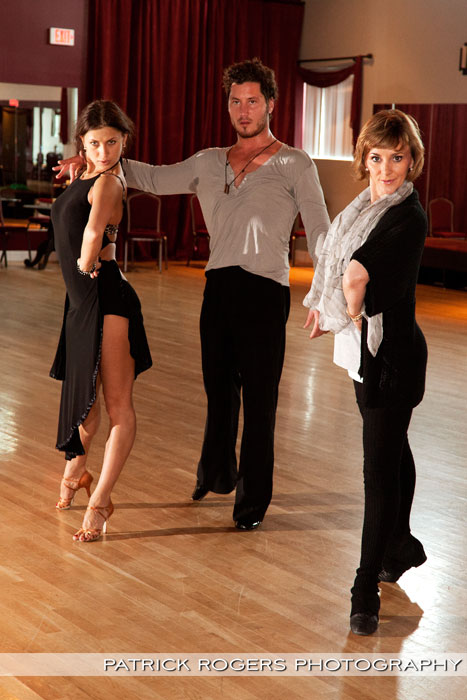 I don’t have to perform as much.” This is not the case. Watch Michelle Dorrance if you need tap performance inspiration.
I don’t have to perform as much.” This is not the case. Watch Michelle Dorrance if you need tap performance inspiration.
#8. Have fun! Seriously.
I know firsthand how crazy competitions can be — the quick changes, the moms, how tired you are, and the pressure of doing well for your teachers, choreographers and the judges. It can all be quite overwhelming. Keyon Smith encourages, “Always have fun! Months of your hard work and dedication culminate in minutes on that stage, so enjoy the moment!”
When you can, take a break, take a moment, and watch other dancers or play a game with your friends backstage. And appreciate that you have the opportunity to dance, which should never be taken for granted. And we, as judges, will always score a dance higher if the dancers on stage have high energy and are having fun! Because that way, while sitting in our isolated chairs, after hours of talking into a microphone, we have a little fun, too.
By Allison Gupton of Dance Informa.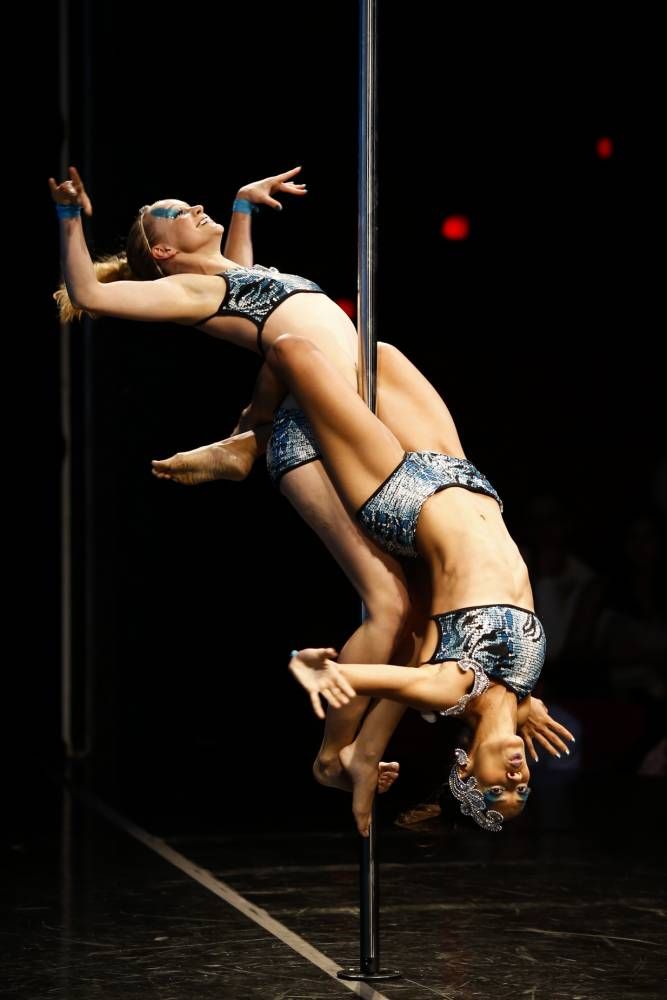
Photo (top): Students from CK DanceWorks at competition. Photo by IT Cinema.
Related Items:dance competition, dance competition judges, dance competitions, dance costumes, Homepage Top Heading, Jordan Keyon Smith, Lesley Anne Mealor, performance quality, Tips & Advice
How to get a prize and the sympathy of the judges at the competition according to Alexandra Tokareva
April in the dance industry is always full of events for every taste, different themes and different dance styles for both experienced dancers and beginners.
The Dance.ru correspondent talked to the choreographer, jury member of Russian and international competitions, director - Alexandra Tokareva and learned how to get a prize and the sympathy of the judges at the competition.
How it was before and how it is now.
A well-established system of competitions worked in the USSR. Talents were sought all over the country.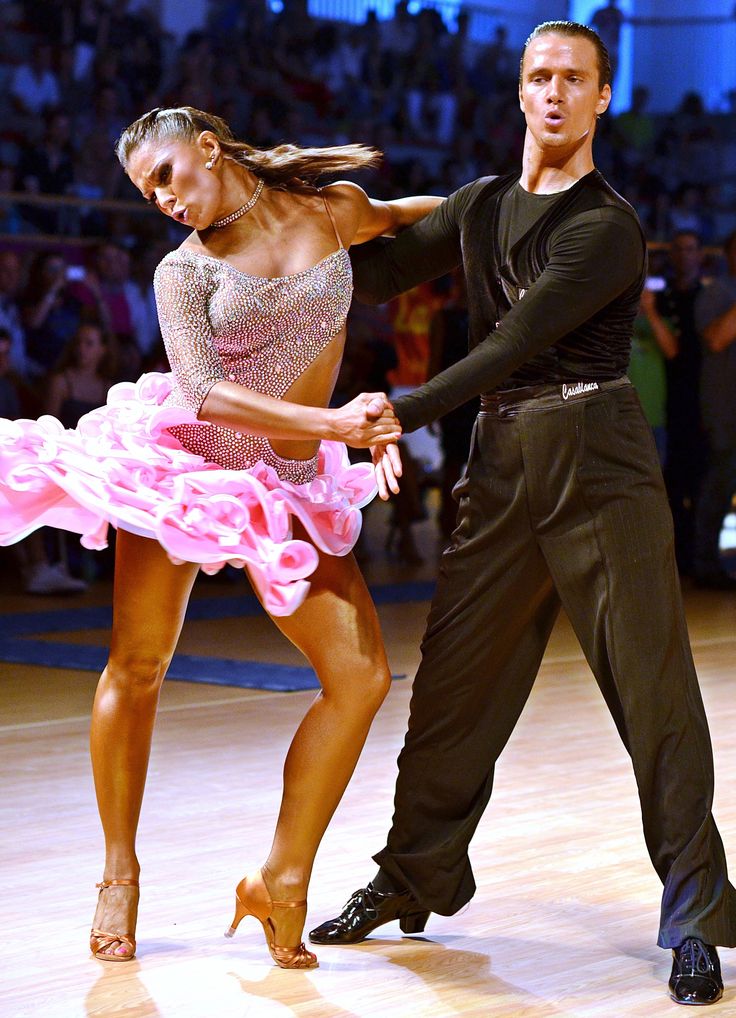 The teams that won the city competitions were sent to the regional, then to the All-Russian. All-Russian winners were shown on TV and sent on tour abroad. From abroad it was possible to bring a deficit. So, for example, a very young ballerina Nadezhda Pavlova, my mother’s friend in Perm, brought orange chewing gum to the ballet school - and they were one of my mother’s brightest memories of this period of life.
The teams that won the city competitions were sent to the regional, then to the All-Russian. All-Russian winners were shown on TV and sent on tour abroad. From abroad it was possible to bring a deficit. So, for example, a very young ballerina Nadezhda Pavlova, my mother’s friend in Perm, brought orange chewing gum to the ballet school - and they were one of my mother’s brightest memories of this period of life.
But that was in the 70s. Now everything has changed.
City competitions are rarely held, regional competitions are often held in the format “only for their own” - it is almost impossible to learn about them and even more difficult to win without having connections in the regional “culture”. But a sufficient number of all-Russian competitions have long been formed on the market.
They are commercial, and this is convenient: the team pays a fee, and behind it, as it were, two levels passed: district and regional. A prize-winning place in such a competition becomes pleasant and honorable.
Why else does a choreographic team need a face-to-face competition?
This is a performance opportunity as such – often the only “big stage” that children can be on. This is an independent examination of dance achievements. And, of course, this is an adventure: competitions are often held in tourist-attractive cities, and after the performances, the guys go on interesting excursions.
Also, at face-to-face competitions, a video recording is often made, which is then sent to correspondence dance competitions.
How to choose the right competition?
It is believed that it is necessary to focus on organizations that have been on the market for a long time. This is not entirely true: I would suggest paying attention first of all to the competence of the jury members. No one except the producers of the federal TV channel will like it if the jury for choreography consists of songwriters and photo models.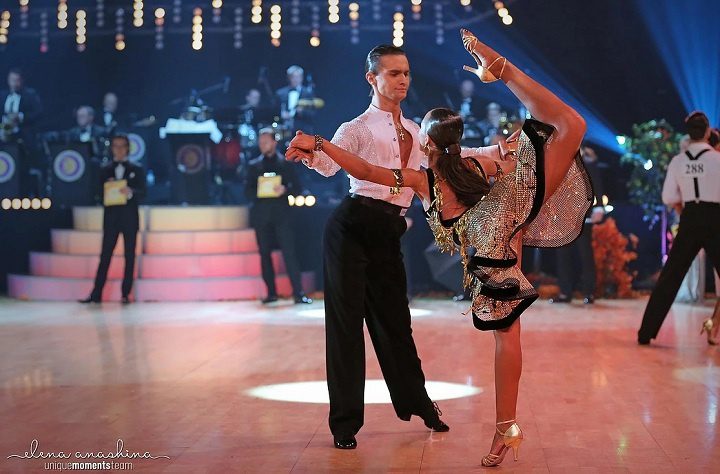 I personally had a story about how many years ago I brought a tap number of my studio to the competition and got into a fight with a member of the jury - a poet, who began to explain to me that tap dancers should beat to the beat of the music (!).
I personally had a story about how many years ago I brought a tap number of my studio to the competition and got into a fight with a member of the jury - a poet, who began to explain to me that tap dancers should beat to the beat of the music (!).
At least three people are invited to the choreography. Each of them, as a rule, has a different specialization. The ideal "set" of the jury is: representatives of the direction "modern dance", "folk dance", "classical dance". Sometimes the full names of the jury members are written in the regulation on the competition. If not, you can check with the organizers who exactly will judge.
Ideally, a member of the Choreography Jury should have a higher education in their specialty and experience in dance performances.
If you are meticulous, check the social media of the jury members so that you have the opportunity to rejoice in advance.
What you need to know about the work of the jury
Sometimes the jury reviews 250 numbers a day. I'm serious. Therefore, dancing longer than 3-4 minutes is risky. Even if your girls swim like swans, you can't take your eyes off.
I'm serious. Therefore, dancing longer than 3-4 minutes is risky. Even if your girls swim like swans, you can't take your eyes off.
Putting on your team a dance that you found “somewhere on YouTube” is not the best idea. So one day, during one competitive day, I met three identical dances that were performed by groups from different cities.
Separately, I would like to note the choice of musical composition - try to avoid popular music. In my personal “hit parade” is “Little Milk”, which I heard at least 30 times at competitions in the fall of 2021. And “I threshed on the stove”, without which not a single competition can do now.
Children always look strange, dancing to the hits of the conditional Valery Leontiev of the 80s or to the suffering of the early Alla Pugacheva.
Psychedelic sounds from horror films, which delight fans of everything complex and intellectual, will not delight the jury at the children's competition either. From the point of view of perception, this is a sin, which can only be redeemed by an impeccable dance number.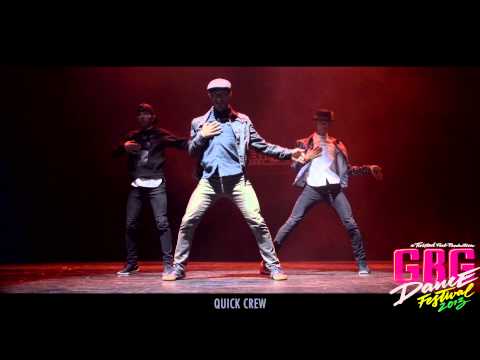
Impeccable dance number
It's always a story. Your stage is an opportunity to convey your idea to the viewer. No thought, no dance. Well, how would you personally react to a person who talks about nothing? Even if he speaks beautifully.
Jury members work differently in all competitions. Sometimes my colleagues and I fill out forms with evaluation criteria. Sometimes we verbally discuss and make a decision on each issue. For me, in addition to the plot, the following are important: technique and musicality of performance, stage image, acting skills.
That is, one idea is not enough. It must correspond to the music, the refinement of the movement, the plasticity, the emotionality of the artist. His suit.
And his age.
Ballet in diapers
There is no need to stage complex variations from the Swan Lake ballet on 5-year-old girls - even the most talented of them are physically unable to perform complex classics.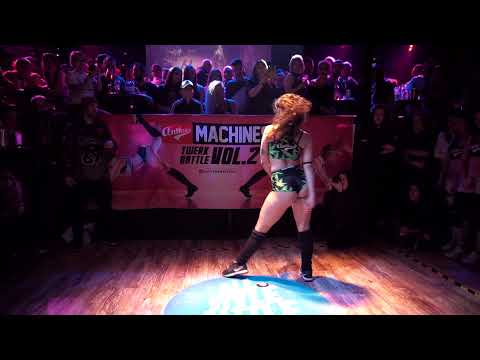 They don't understand the music, they don't understand the choreography - and in my opinion they simply insult the classical heritage of Russian ballet. The conditional “Ballet from scratch” is probably commercially successful, and the parents of its pupils may, on occasion, drop that their daughter in diapers is performing a variation of Aurora from the ballet “Sleeping Beauty”. But he performs it in 100% of cases in such a way that the entire jury, in a fit of Spanish shame, wants to get up and leave the hall.
They don't understand the music, they don't understand the choreography - and in my opinion they simply insult the classical heritage of Russian ballet. The conditional “Ballet from scratch” is probably commercially successful, and the parents of its pupils may, on occasion, drop that their daughter in diapers is performing a variation of Aurora from the ballet “Sleeping Beauty”. But he performs it in 100% of cases in such a way that the entire jury, in a fit of Spanish shame, wants to get up and leave the hall.
Children should be brought up on the classics, and in my opinion, classical dance is the only possible basis for a good dance school. But with kids it is better to study and practice simple studies. They will not only look better on stage, but will also be useful for the child in terms of his development.
As bad as ballet in diapers, belly dance, pole dance and other “seductive” dances performed by pre-pubertal children look on stage.
Costumes
Twelve-year-old even very trained children dancing in costumes of pigs is bad (if this is not an art house and a production based on the work of Aldous Huxley). Children in costumes of churches, children in costumes of birches (yes, yes, there were also such things) - this is without comment.
Children in costumes of churches, children in costumes of birches (yes, yes, there were also such things) - this is without comment.
The costume must match the design. It will not work to impress the jury with a costume and outshine the weak choreography - as a rule, choreographers see only the performance.
Force methods will not pass
Dear leaders, you paid money to have your work reviewed by independent jury members. And the jury has no purpose to offend you personally, your children and the mother of your children. Also, the jury does not have a goal to "push" talented performers - on the contrary, we are always happy when we see amazing dance numbers. And if we sincerely fell in love with this number, we will defend the receipt of the Grand Prix by the team. Our task is to see and encourage really strong performers and directors. And also meet at the round table with those contestants who are on their way to an excellent dance number and help them with advice.
Therefore, there is no need to lie in wait for the jury members at the toilet and pounce with a cry “Why did you give us such low marks ?!”. At the very least, it's ridiculous and sad. The jury will not change the assessment, but once and for all you will leave an impression of yourself as "a team leader who behaves inappropriately."
Instead, use the advice in the next paragraph and impress us with your performance.
How to put the prize dance number
If you are not confident in your abilities, invite a good choreographer. As a last resort, take the advice of a good choreographer-director before starting to work out the performance.
It is important to attend as many master classes as possible from professional dancers working in your dance direction.
Before you go dancing to an internal competition, try to make a video and send it to a good correspondence competition. For a small amount, you can get professional recommendations that can help you a lot to adjust the number.
The preparation of children is important for the quality performance of the dance. Include mandatory classical dance classes at least 3 times a week for 45 minutes. After each session should be stretching - the more the better. A year after them, your pupils will at least stop slouching and will feel their body better.
And, of course, acting lessons are important.
Not a short way, right? But I am sure that the road will be mastered by the walking one. And those who put in the maximum effort will definitely succeed.
Endocrinologists sing and traumatologists dance
International Medical Students and Nursing Art Festival, held on the initiative of the Medical Newspaper and the Central Committee of Trade Unions medical workers can truly be called the largest and most significant creative competition among representatives of the medical profession in our country. This festival, which has become native for Tveriks, is annually, for the fifth time, brings together doctors, nurses and medical students from various cities of Russia and neighboring countries to find out who of them is the most singing, dancing, cheerful and artistic.
Prestige festival is unusually high, this can be judged not only by the number of participants (more than 200), but also by the geography of the contestants. Judge for yourself - Moscow, St. Petersburg, Voronezh, Stavropol, Krasnodar, Minsk, Ukhta, Smolensk, Ryazan, Astrakhan, Astana, Alma-Ata, Yaroslavl, Kazan, Chelyabinsk, Ulyanovsk, Yekaterinburg, Vitebsk, Vladikavkaz, Volgograd, Bryansk and, of course, Tver. Venue of the convention creative people in white coats also traditionally changes annually. The first three festivals were held on ancient Smolensk land, the fourth hospitably received the Ryazan Medical University, but the current, fifth account, "registered" in the lower reaches of the Volga on the basis of the Astrakhan state medical academy.
The Tver region is traditionally represented at this festival by the Tver Medical Academy. Let me remind you that the participation of our artists at the festival has never gone unnoticed. It is curious that the first winner of the most prestigious nomination "solo vocal" in 2006 was the assistant of the Department of Public Health and Healthcare of the TSMA Alexander Ivanov, and the assistant professor of the Department of Faculty Surgery, and the famous opera tenor Georgy Vakulin in the same year was awarded a special honorary prize from the President of the Russian Academy of Medical Sciences Academician Mikhail Davydov. The year 2007 brought the Grand Prix in the STEM nomination to the treasury of prestigious creative victories of Tver doctors, which was won by KVN workers led by Mikhail Kalinichenko. A year later, choreographer Natalya Chernina, a dentist and head of the TSMA dance club "Natalie", was invited to head the jury of the debuting nomination "Dance Mastery". By the way, at this competitive forum, the Tveryaks did not change their traditions and won the 2nd place in the “Vocal” nomination (student of the Faculty of Medicine Anastasia Vinogradova) and 3rd place in the “Vocal Ensembles” group, not to mention numerous prizes and gifts . It is curious that the “silver” in the dance competition was received by a graduate of the TSMA, dentist Ivan Sachkov (Kaluga).
The year 2007 brought the Grand Prix in the STEM nomination to the treasury of prestigious creative victories of Tver doctors, which was won by KVN workers led by Mikhail Kalinichenko. A year later, choreographer Natalya Chernina, a dentist and head of the TSMA dance club "Natalie", was invited to head the jury of the debuting nomination "Dance Mastery". By the way, at this competitive forum, the Tveryaks did not change their traditions and won the 2nd place in the “Vocal” nomination (student of the Faculty of Medicine Anastasia Vinogradova) and 3rd place in the “Vocal Ensembles” group, not to mention numerous prizes and gifts . It is curious that the “silver” in the dance competition was received by a graduate of the TSMA, dentist Ivan Sachkov (Kaluga).
2009 was a triumphant festival year for the Tver creative delegation. Pupils of the cultural center of the academy became winners in all nominations where they were lucky enough to participate. Let's name the victors - Maria Skurat (laureate of the "solo vocal" nomination), the dance couple of Oksana Vasilyeva and Arsen Aghamalyan (grand prix in the dance competition), the KVN team "MVD" became the best in the "STEM" nomination, Anastasia Vinogradova and Valentina Dony. Such a stunning success of Tver doctors was the reason why the Tver State Medical Academy became the first winners of the Challenge Cup, established by the Council of Rectors of Medical and Pharmaceutical Universities of Russia.
Such a stunning success of Tver doctors was the reason why the Tver State Medical Academy became the first winners of the Challenge Cup, established by the Council of Rectors of Medical and Pharmaceutical Universities of Russia.
Tver brought to Astrakhan not only the winning cup, but also a solid team of participants, including vocalists, dancers and STEM members. Perhaps, the Tver Medical Academy pinned its main hope for victory this season on Anastasia Vinogradova, a student of the Faculty of Medicine, laureate of the World Vocal Competition in Vienna, who has already been recognized twice as a silver medalist at festivals in Smolensk and Ryazan. Nastya prepared the most complex operatic repertoire - the aria "Queen of the Night" from Mozart's opera "The Magic Flute" and pizzicatto "The Doll" from F. Delibes' ballet "Lakme". The future endocrinologist Artur Starovoitov also decided to surprise Astrakhan residents and brought to the festival Father Lorenzo's Aria from the musical Romeo and Juliet, and TSMA graduate student Maria Kochnova won the hearts of the public with her performance of the song Malyado from Lara Fabian's repertoire. The classical ballet program was presented at a high level by a 6th year student of the TSMA Valentina Doniy, who danced en pointe on the Astrakhan stage an excerpt from Bejart's ballet "The Bhaktas". The ballroom dance composition of the Tver intern of the Department of Traumatology Alexander Kulakov and the student of the Academy Irina Stepanova under the name "Roxan" did not leave indifferent either the jury or the audience. An unusually artistic and groovy first-year student Yulia Leonova made her debut at the festival with an incendiary Indian folk dance. The MIA STEM team (V. Filippov, D. Daniyalov and M. Mayorov), with the direct participation of the main ideological inspirer and screenwriter Mikhail Kalinichenko, literally “teared” the cackling hall with humoresques on the theme of the festival, the jury panel and the colors of the Astrakhan land.
The classical ballet program was presented at a high level by a 6th year student of the TSMA Valentina Doniy, who danced en pointe on the Astrakhan stage an excerpt from Bejart's ballet "The Bhaktas". The ballroom dance composition of the Tver intern of the Department of Traumatology Alexander Kulakov and the student of the Academy Irina Stepanova under the name "Roxan" did not leave indifferent either the jury or the audience. An unusually artistic and groovy first-year student Yulia Leonova made her debut at the festival with an incendiary Indian folk dance. The MIA STEM team (V. Filippov, D. Daniyalov and M. Mayorov), with the direct participation of the main ideological inspirer and screenwriter Mikhail Kalinichenko, literally “teared” the cackling hall with humoresques on the theme of the festival, the jury panel and the colors of the Astrakhan land.
The results of the competitive programs once again did not disappoint the Tver delegation. Anastasia Vinogradova was recognized as the laureate of the 1st degree in the vocal competition, Valentina Doniy and the ballroom couple A. Kulakov - I. Stepanova were recognized as the best in the nominations "classical dance" and "Ballroom dance", respectively. Maria Kochnova was awarded an honorary diploma by the jury of the competition, and Yulia Leonova brought a special prize from Astrakhan for her amazing performance of a playful Indian dance - a laptop. As a result, in the team standings, the Tver team lost only one single point to their rivals from the Smolensk State Medical Academy, and therefore the majestic cup of the Council of Rectors of Higher Educational Institutions left for the whole year to "guest" in the Smolensk region.
Kulakov - I. Stepanova were recognized as the best in the nominations "classical dance" and "Ballroom dance", respectively. Maria Kochnova was awarded an honorary diploma by the jury of the competition, and Yulia Leonova brought a special prize from Astrakhan for her amazing performance of a playful Indian dance - a laptop. As a result, in the team standings, the Tver team lost only one single point to their rivals from the Smolensk State Medical Academy, and therefore the majestic cup of the Council of Rectors of Higher Educational Institutions left for the whole year to "guest" in the Smolensk region.
It should be said with special pride that this year, at the festival of medical students and medical workers, Georgy Vakulin, associate professor of TSMA, laureate of international vocal competitions, who was the director and co-host of the grandiose gala concert of the festival, held on the beautiful stage of Astrakhan philharmonic. It is curious that Georgy Vladimirovich, under the terms of the competition, did not have the right to vote for his fellow countrymen.

